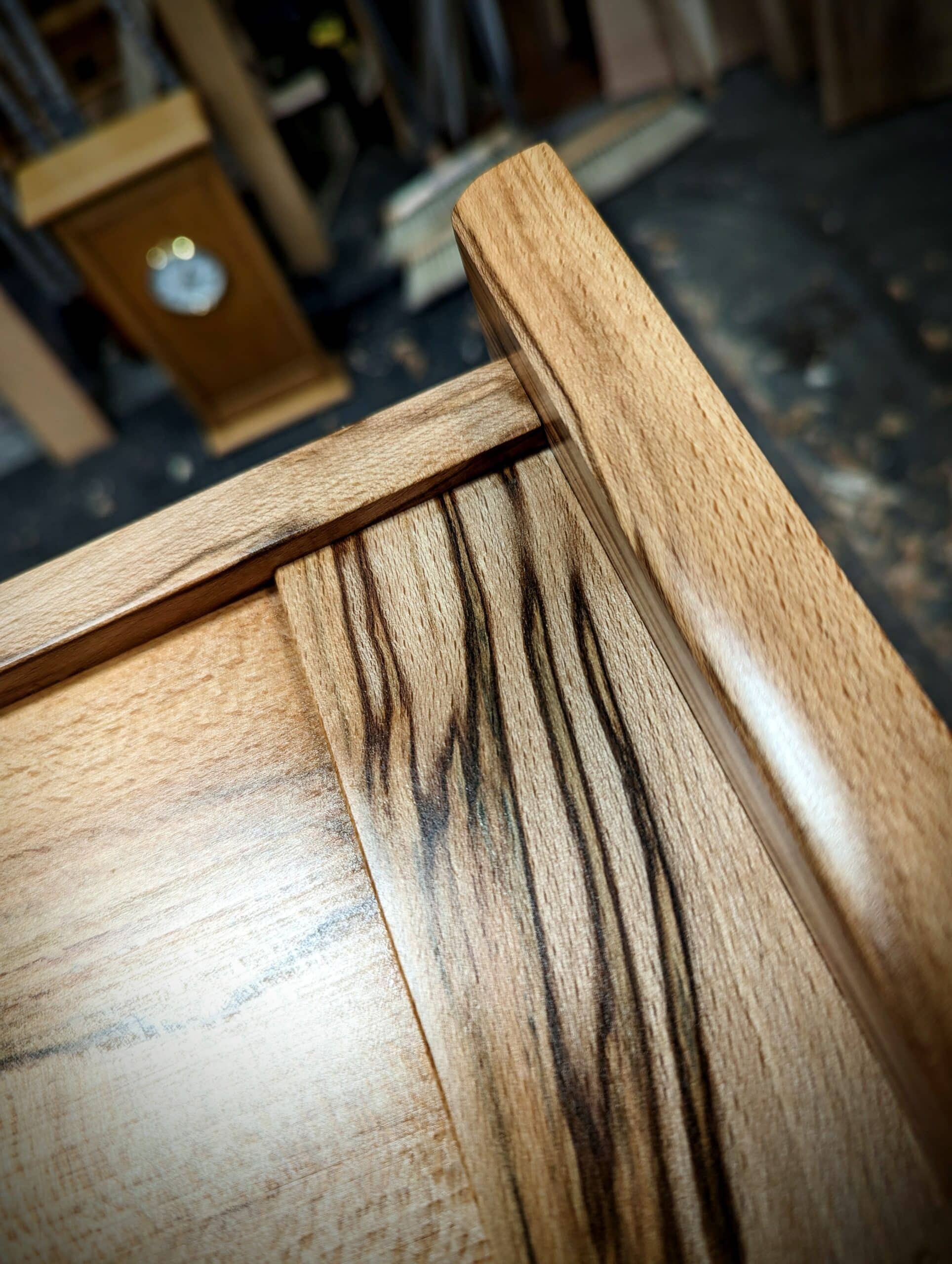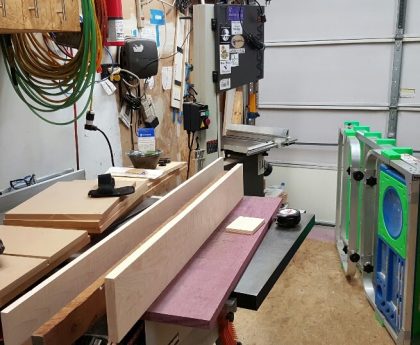Crispness comes in things we least expect––and then too, as if to surprise us the more, at times we least expect. There comes a sharpness to what we do that defies our ability to encapsulate what we feel yet undeniably it came from our own imperfect hands, causes us to stop, to hold our breath and to then stare at the impossible exactness of it. This crispness identifies the occasion when we surprised ourselves with the precision of a single pass where the chisel or the plane leaves a pristine surface from a single and continuous pass that’s achievable in no other way on earth. This marvel, this experience is known only by woodworkers working with hand tools The outcome, the crispness of it, lifts the soul as I speak it into being with my own soul and by the working of the wood. Sometimes, most times, crispness is difficult to understand. The exactness of what we do sometimes, the pure synchrony of a whole being aligning mentally and physically, is inexplicable with words and so we remain, at best, almost speechless.
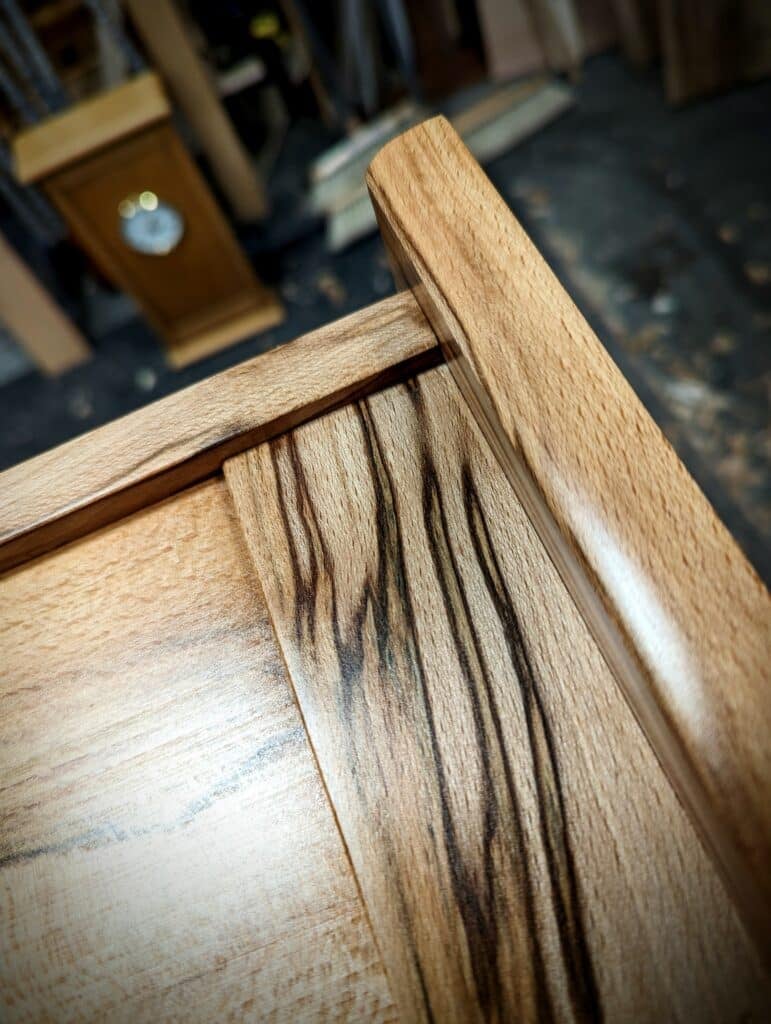
The art in craft is seldom considered art but craft is the art of work and art is of our kind is no different than all other art forms. Art demands that we work to order. Every brsush stroke and striking pencil, notes played and assembled on a score sheet is our acknowledged order of all we do. It’s no different in the pacing of the chisel, the planing of wood and the saw strokes taken in the reductive process of making. Every process in woodworking is a reductive process that begins with the killing of a tree, the slabbing of it and then the levelling and smoothing of it ready for greater reduction in the joinery and fitting processes. Whether you make a cello, a kayak, a dining chair or a bench to work from, the first reduction comes with the sharpening of the saw and the axe. From this point on we must perform the interchange of two reductive practices and alternate between the two. By filing and honing we abrade our cutting edges to increasing levels of fineness so that we optimise our ability to cut wood. The next reductions come in our cutting into the wood to remove the excess. This reduction brings smoothness but more than that we remove any and all distortion in all surfaces and this leads to the reduction of joinery.
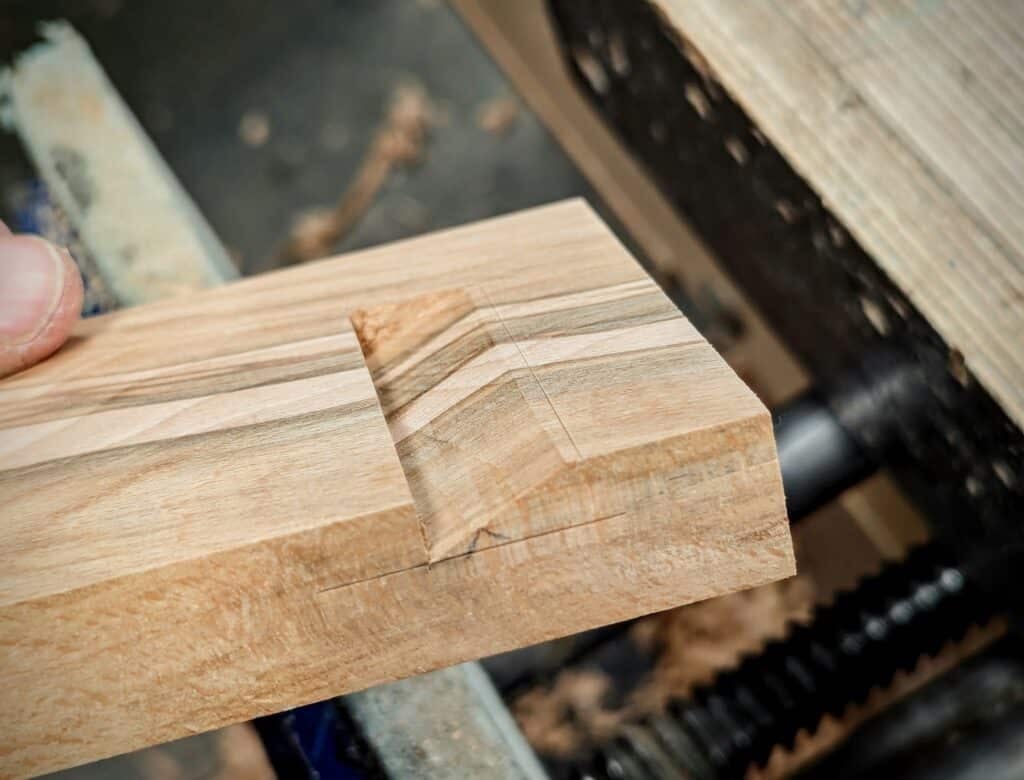
It’s not what we make that is of primary importance but the how of it. How we make anything determines the outcome and this is the reason I pursue handwork with such a passion of self high demand. At the end of any given day, in the making of all things, I can say quietly or loudly to myself, ‘I did make it.’ My self declaration says I put the whole of my being into this piece and every single pressure applied through each tool to the wood came from my own body. I heard the shavings part and the chisel in the paring cuts. I felt every single parting take place and persevered until the surfaces were smooth and the joints came together with crisp precision. hearing and seeing these things, smelling the wood and touching it are all unfiltered and pure. No face masks an no ear defence to block out contamination because the atmosphere is always clean and clear. The perpetual attachment to this way of working perpetually refines me as the maker. I look for no other way. Why? Because I arrived!
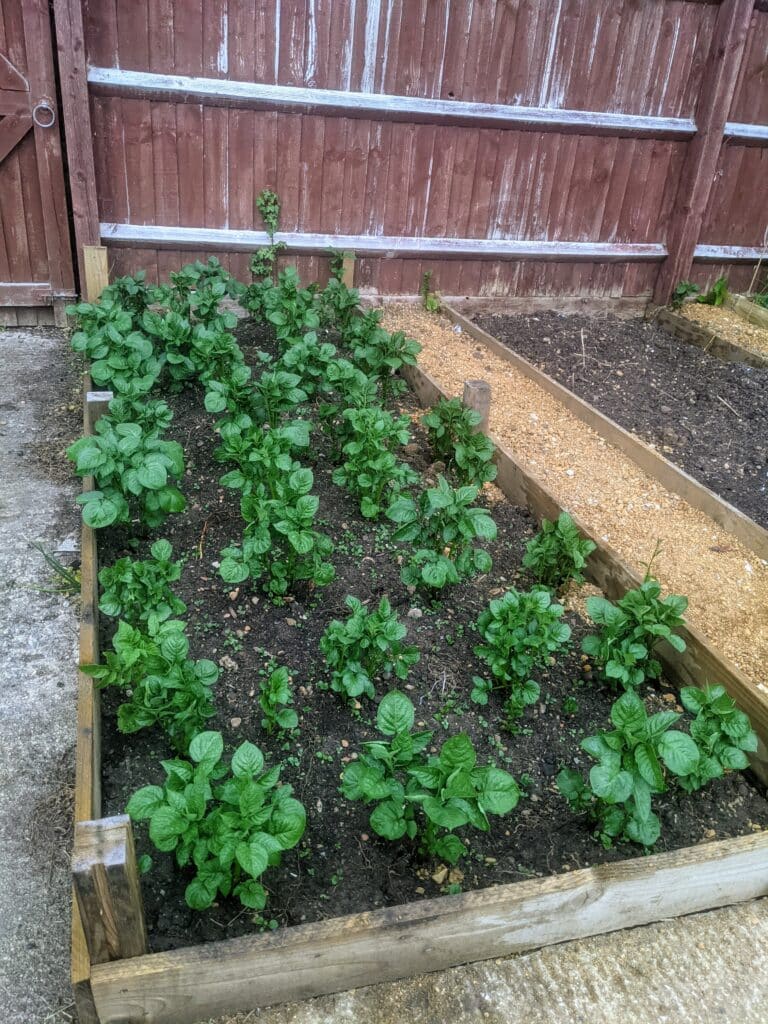
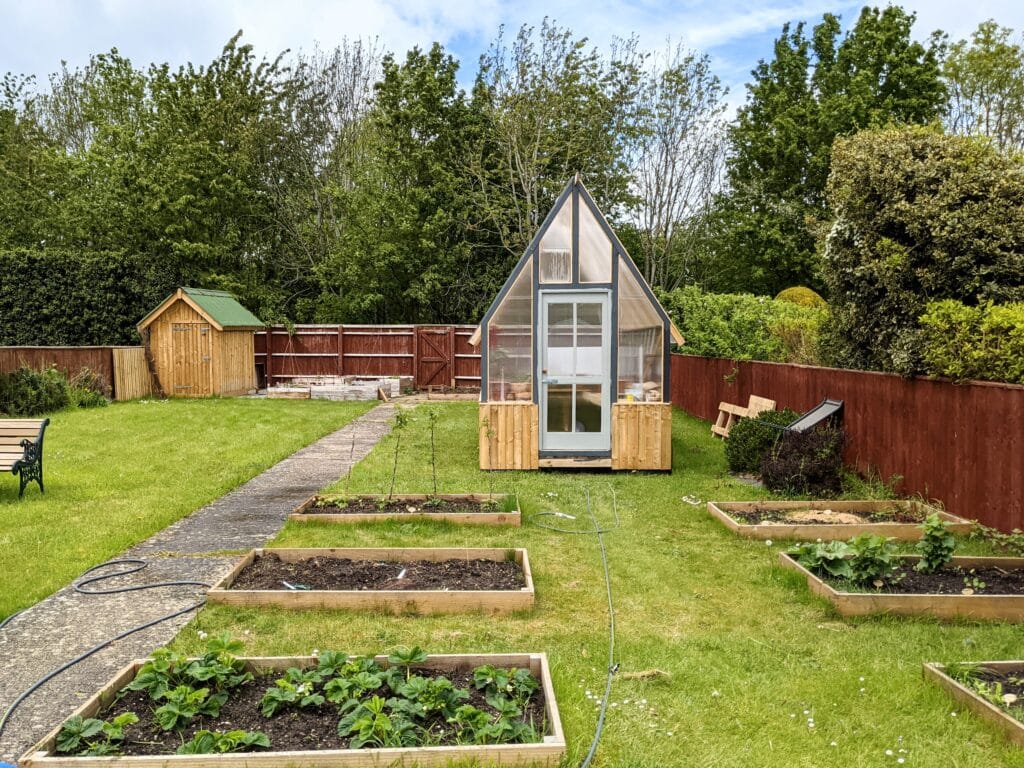
In the digging of soil for a garden bed the earth reveals its hiddenness in more than the mind can ever consider. For this reason alone I plant my garden expecting food to grow; when the flowers fade I uproot the root vegetables and pick the fruit of different kinds. Strawberries and raspberries, tomatoes and such are usually prolific throughout the weeks of our English summer. It’s nice to start the day there considering the ripening of how we plant and water and then where the increase comes from. It costs so little when you follow the art and practice of diligence. My methods may be considered outdated, archaic, but the joy of making the earth ready earlier and then connecting to the growth as the season peaks shows me that none of my early work is ever in vain. In all things craft there is the period of readying by steady work that cannot be ignored or neglected without consequence. I rotated my beds each year and worked new compost from the farm friend I have into the soil. The deep digging wrote its future worth in a tilth that sent the roots deep and the yield higher than the year before and the year before that and so on. Sending the spade-fork ten inches deep without even using my feet settles the matter of planting, weeding and water retention. I throw in the seeds and up come the plants. I try to process the effort that so defies word I search for and I find no other than ‘crispness’. There is a crispness to it, you see. A sort of exactness.

Woodworking by hand requires the constancy of making ready which always begins with the sharpness of our cutting edges, marking points in gauges, our pencils and the first few millimetres of our knife edges at the point; many woodworkers never experience true sharpness nor do they establish a truly sharp edge. This basic task seems all the less practiced and thereby less mastered in our present age and those that do very often complicate what should be the simplest, quickest task of all taking no more than a single minute or less per tool’s edge. Four chisels taken from dull but not ill treated to so-called surgical sharpness takes me under four minutes. It’s a machineless process with no protractors or sliding bevels needed and my macro-cambers follow hundreds of years of woodworking tradition. We hand tool makers soon realise that without sharp edges and crispness in our work we should give up and machine every process. If we are not prepared to keep sharp edges then we will never achieve the quality we strive for.
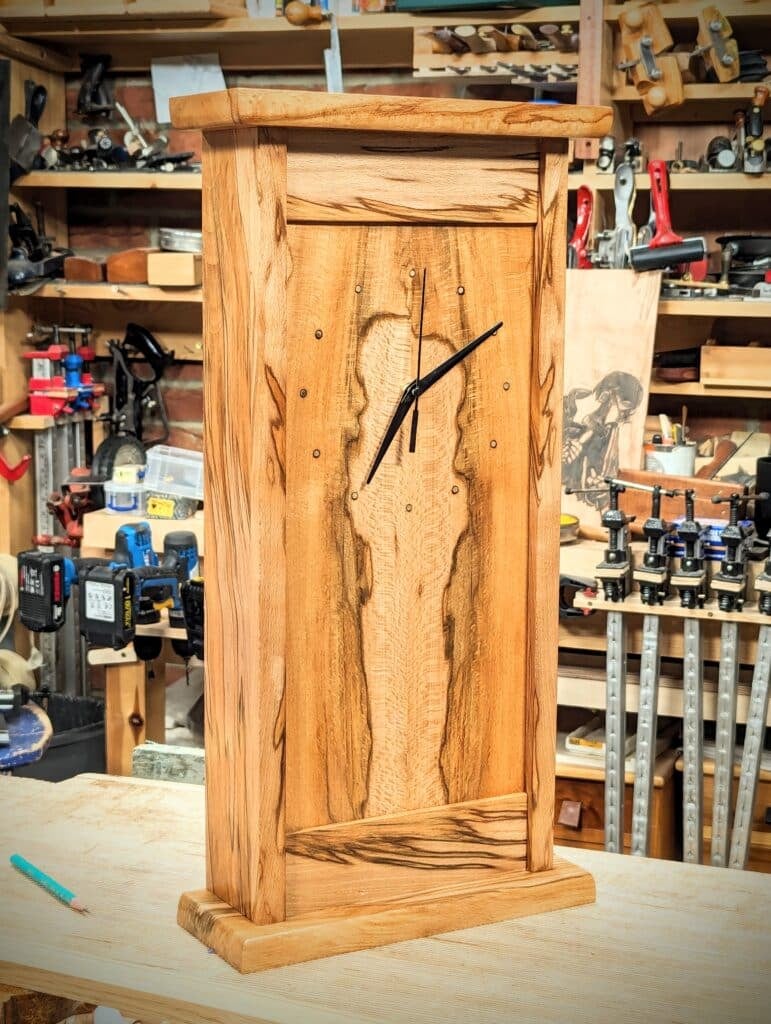
Crispness comes in many forms: the pencils I draw and lay out with, the aligning of edges and faces, a dozen more things such as that. I can barely feel the lateral lever move under my thumb but the smallest fraction brings the blade of my planes into perfect parallelity yet I rarely look to see if it is out nor whether it aligned after the change I make. It’s more the sound and feel coming from action on the wood that I first sense even though no stroke is taken. By this minor impression I’m guided to move the lever accordingly. I change the depth of cut by sound alone and take off thousandths of an inch or centimetre with a part-turn I know to be exactly what I need. This comes through practise over time. I take myself by surprise many times in a day when I do something exactly opposite to the norm to achieve a better result. The pull instead of the usual ordinary push. The softer saw strokes prefacing the deeper penetration that follows by the making ready through graduation. There’s a press and compression that ‘feathers in‘ a plane stroke to narrow one side of the shaving over another. All through the day these crispnesses keep coming yet I seldom think this or that through the filter of my mind and I have never seen 95% of them written down for others to follow. Why is this? They were always passed from man to boy in spoken trust. A small voice here and there, a challenge, a careful passing word or even a gruff shaking, the flicking and clicking of thumb and finger as a disapproving ‘tsk, tsk!’ You might never know such things going forward but the sensing that a man stopped, said no word but waited for a changed attitude in a youth until he achieved the result needed to succeed. Even without such ancients holding the keys to our craft, this unspoken guidance can still come to us if we are sensitive enough to listen and question the whys of our working. Such growth will come to us all when we put down the rulers and the mechanical presets to own the intuitive of what we must ultimately experience. Logic seems often only to prove what we might do without it. I find this true of science too. Rarely has science told me much except to prove what I already grew to know. Life working explains all things to an inquisitive search for answers. The friction between the sole of a plane and the wood’s surface causes something commonly termed chatter that’s a thousand times more likely than any thin cutting iron ever will. Of course, it’s not chatter at all. I have never retrofitted my plane irons for thicker irons because I have never once needed to and in 60 years of daily making as a lifetime woodworker making furniture I have never had a thin iron that ‘chattered’ the surface of my work. Plane chatter is a rare phenomenon often called chatter but that’s not it. I won’t go into that here.
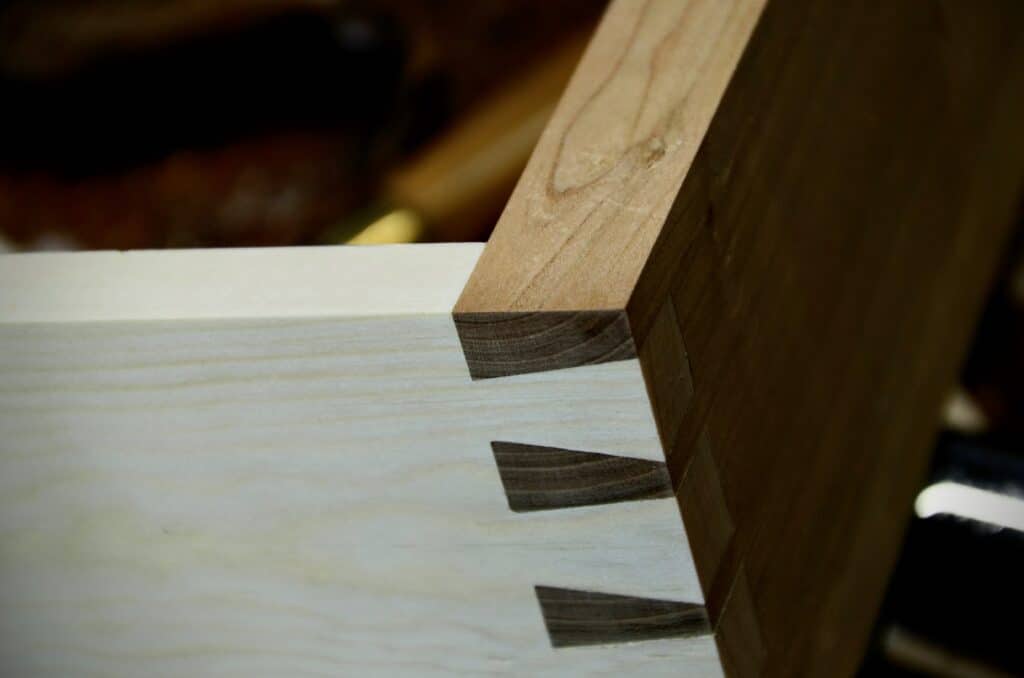
Crisp outcomes to my work come from a readiness to repeatedly sharpen all of my tools no matter how high the demand of the wood or the work. A dull plane that stops cutting because of neglect is testimony against the craftsman. Sharpening never waits for a lazy craftsman and to sharpen a plane, a chisel and even a saw if need be should happen just before dullness is felt. In a given day I generally find myself sharpening after every hour or so of use, perhaps much less if the work demands it. Sharpening is never onerous, never interrupting and never unnecessary, it’s always a part of the process of making. By this we achieve crispness in every element of our working.
